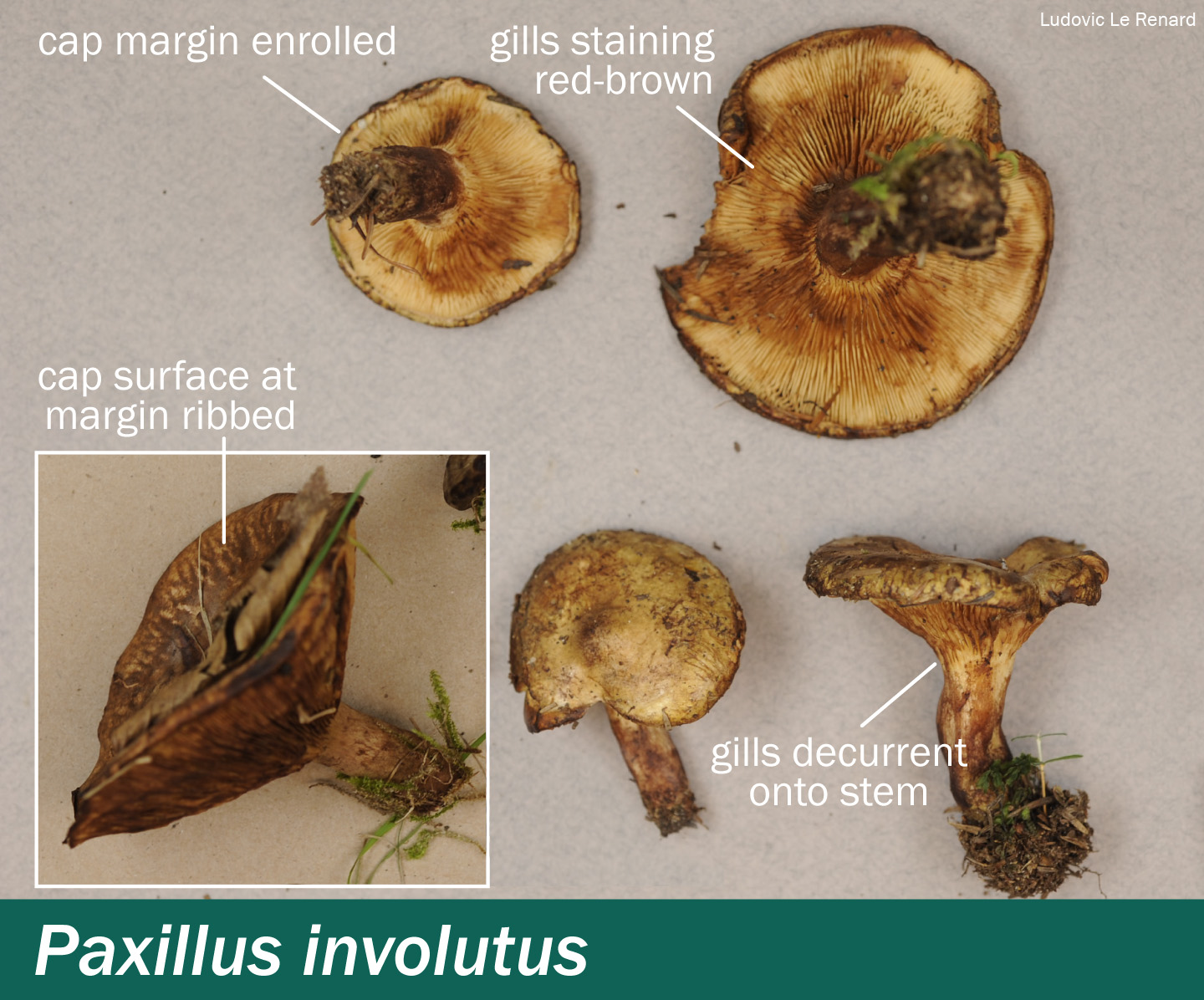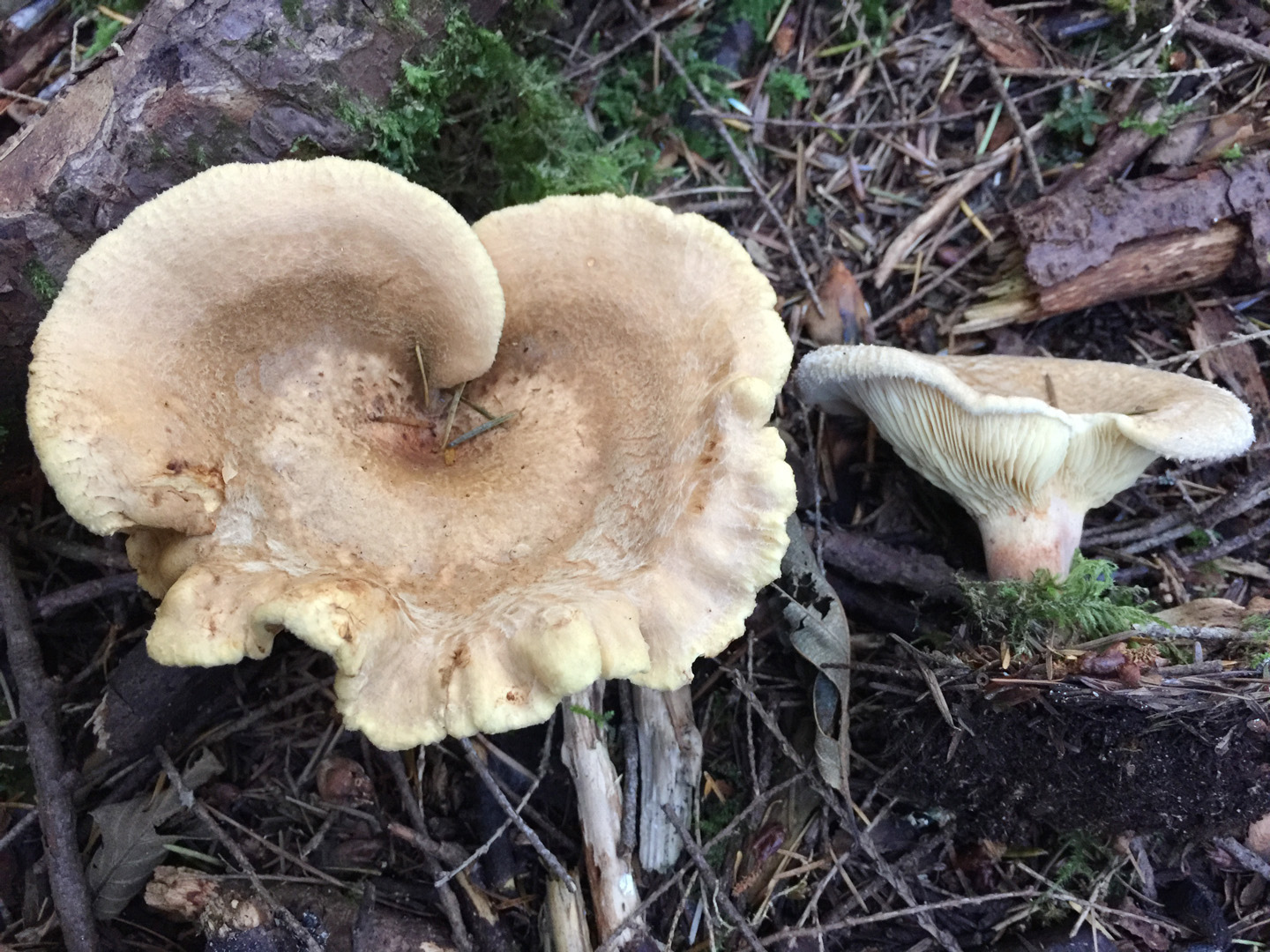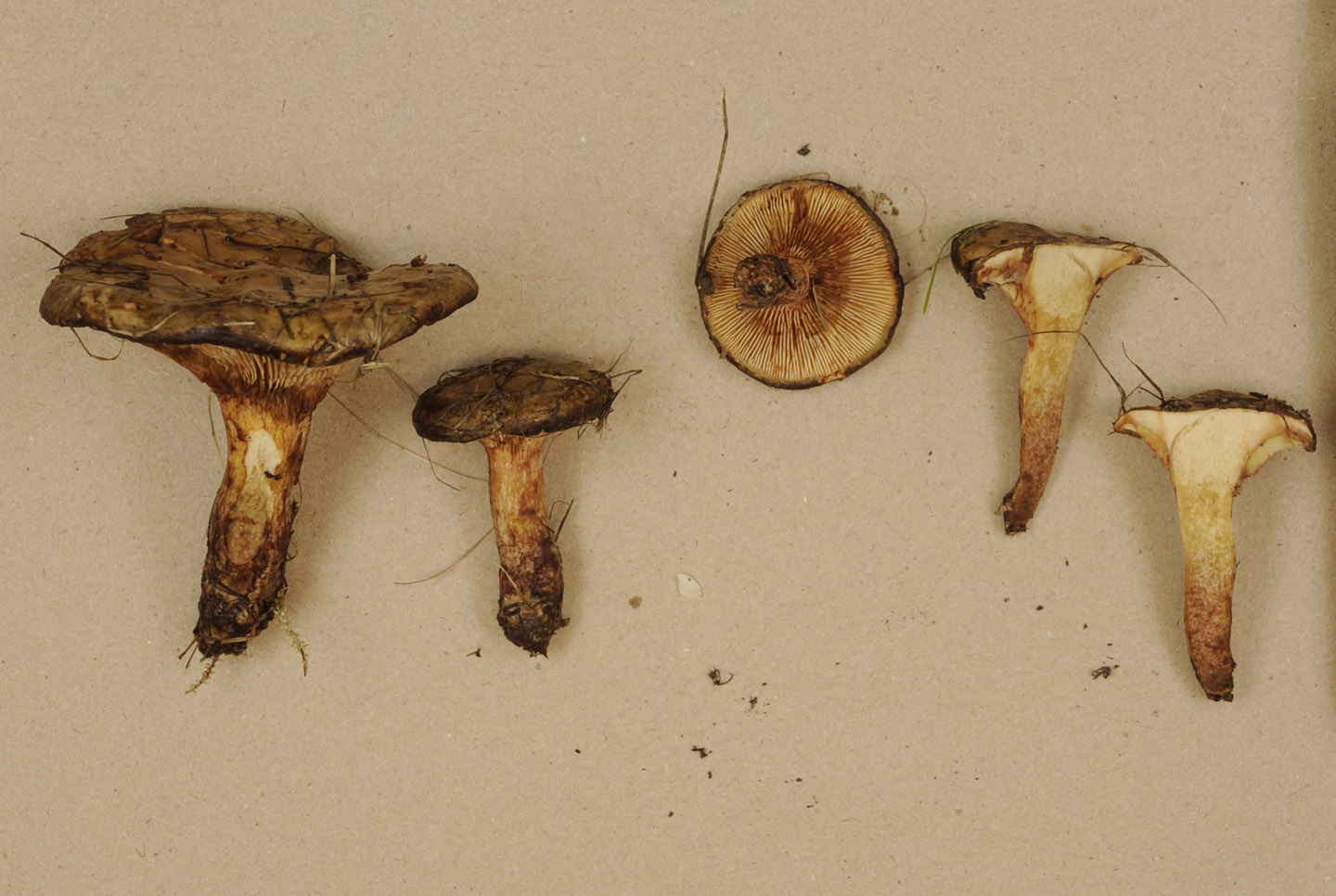Paxillus involutus — Poison pax, brown roll-rim
Odour: Indistinct
Cap: 5–10 (–20) cm in diameter. When young, convex with deeply inrolled margin. Expands and becomes flatter with age, the centre commonly becoming depressed, sometimes with a central umbo while the margin remains inrolled. The surface is a slightly greenish brown, becoming brown with age. The inrolled edge may be distinctly grooved or striate.
Gills: Rather crowded, thick, pale yellow then brown, rapidly bruising red-brown when touched. The gills are easily peeled off from the underside of the cap.
Stem: 3–7 (–12) cm long x 1–3 (–4) cm wide and in many cases shorter than the cap is wide, with solid flesh. The colour is similar to that of the cap, and the stem also bruises easily.
Ring or veil: None.
Cup: None.
Spores: ~7–9 x 5–6 µm, brown.
Habitat: In various forest types, with coniferous and deciduous trees. Ectomycorrhizal
Geographical range: The name Paxillus involutus has been used for at least three different Paxillus species of western North America4. As a result of the taxonomic confusion, the range extent and habitat of each individual species is unclear. The poison pax, Paxillus involutus, is widespread in temperate and boreal Europe and barcode sequencing shows that it occurs in BC.
Symptoms: Cardiovascular collapse and severe stomach aches, nausea and vomiting develop a few hours after having eaten the mushrooms.
Treatment: Contact your regional Poison Control Centre if you realize you or someone you know may have been poisoned by the poison pax or its relatives. Poison centres provide free, expert medical advice 24 hours a day, seven days a week. If possible, save the mushrooms or some of the leftover food containing the mushrooms to help confirm identification.
Poison Control:
British Columbia: 604-682-5050 or 1-800-567-8911.
United States (WA, OR, ID): 1-800-222-1222.
Cases: In Washington and Oregon, one person experienced kidney failure and two had muscle spasms and vomiting as a result of eating poison pax mushrooms11. In BC, a couple ate poison pax, became ill, and then a few days later, one of the two required hospitalization after again barbecuing and eating a large quantity (>12) of the mushrooms in Brandywine Falls Provincial Park12.



